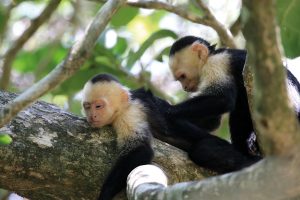Search
What are the hunting roles in chimpanzees? The available evidence suggests that they are capable of coordination between individuals, but it is unclear whether they can also share a common strategy.
Primates usually live in groups. Sociality provides primates with benefits like support and learning opportunities that ultimately increase their fitness.
The order Primates includes more than three hundred species, among which are us, human beings. Perhaps that is why we are so fascinated by their study.
Tomàs Marquès Bonet is a biologist and directs the Comparative Genomics Group at the Institute of Evolutionary Biology (CSIC-UPF), mainly dedicated to analysing and comparing the genome of primates in order to try to better understand the human genome.




